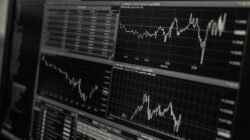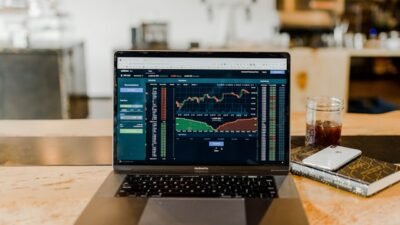How to trade forex for beginners ? One of the first steps for beginners in forex trading is to understand the currency pairs. Currency pairs are the foundation of forex trading. They represent two different currencies and their exchange rate.
Getting Started: Forex for Beginners
Getting started with forex trading can be overwhelming for beginners, but by following a few key steps, you can begin your journey into the world of forex trading with confidence.
1. Educate Yourself:
Before diving into forex trading, it’s essential to educate yourself about the market, its mechanics, and various trading strategies. Reading books, attending webinars or online courses, and following reputable financial news sources can provide you with valuable knowledge and insights.
2. Choose a Reliable Broker:
To start trading forex, you’ll need to find a reputable broker that offers access to the forex market. Finding a reliable broker is crucial to ensure the safety of your funds and the integrity of your trades.
It is important to consider factors such as the broker’s regulatory compliance, customer support, trading platform, and pricing structure when selecting a broker.
3. Open a Demo Account:
Before risking real money, it’s highly recommended for beginners to open a demo account with their chosen broker. A demo account allows you to practice trading forex in a virtual environment with virtual funds. This is a great way to familiarize yourself with the trading platform, test different strategies, and gain confidence in your trading abilities without any financial risk.
Essential Forex Trading Strategies for Newbies
Once you have familiarized yourself with the basics of forex trading and have set up your trading account, it’s time to learn some essential trading strategies. Here are a few strategies that can be helpful for beginners in forex trading:
1. Trend Following: This strategy involves identifying and following the trends in the forex market. By analyzing charts and using technical indicators, such as moving averages or the Relative Strength Index, traders can identify trends and enter trades in the direction of the trend.
2. Support and Resistance: Support and resistance levels are areas on a chart where the price of a currency tends to find support or resistance. These levels can be used to identify potential entry and exit points for trades.
3. Risk Management: Successful forex trading also requires effective risk management strategies. Traders should always set a stop-loss order to limit potential losses and should never risk more than a certain percentage of their trading capital on any single trade.
4. News and Economic Calendar: Stay informed about the latest news and economic events that can impact the forex market.
By regularly checking an economic calendar, you can be aware of important announcements like interest rate decisions, employment data, or geopolitical events that can cause significant market volatility.
When starting out in forex trading, it is important for beginners to have a clear understanding of the fundamental and technical analysis approaches. Fundamental analysis involves analyzing economic and political factors that can influence currency values, such as interest rates, inflation data, and geopolitical events.
Technical analysis, on the other hand, focuses on analyzing historical price data and using various chart patterns and indicators to make trading decisions. By combining these two approaches, beginners can develop a well-rounded trading strategy that takes into account both the fundamental drivers and the technical patterns of the market.
Interpreting Forex Charts and Graphs
Another important aspect of forex trading for beginners is understanding how to interpret forex charts and graphs. Forex charts and graphs provide valuable insights into price movements and trends, helping traders make informed decisions.
There are several types of charts and graphs that are commonly used in forex trading: candlestick charts, line charts, and bar charts.
Candlestick charts are widely used in forex trading as they display the opening, closing, high, and low prices for a specific time period.
They are visually represented by candlestick patterns, which can indicate trend reversals, market sentiment, and potential trading opportunities. Line charts, on the other hand, are simpler and show the closing prices for each time period connected with a line.
Bar charts display the high, low, opening, and closing prices for a specific time period in the form of vertical bars. Understanding and interpreting these charts is crucial in identifying key price levels, support and resistance zones, and potential entry and exit points for trades.
By analyzing these charts, traders can identify patterns, such as trend lines and chart patterns, that can help them predict future price movements.








